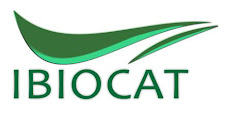The cool site of the day is:
Fireworks!
"Have you ever been to an aerial fireworks show at an amusement park, baseball game, Fourth of July celebration, or on New Year's Eve and wondered about how all the impressive colors and sounds are produced? People everywhere enjoy the fantastic explosions and the brilliant light displays of fireworks. However, these spectacles are much more than just a form of entertainment. Each firework launched into the sky is a precisely formed assembly of chemicals and fuel, carefully calibrated to produce a particular effect – a red chrysanthemum spray accompanied by a powerful explosion, or a blue strobe, for example. Understanding how the contents of a firework produce the impressive variety of colors, forms, and sound intensities requires only a simple understanding of chemical reactions.
Fireworks generate three very noticeable forms of energy: a tremendous release of sound, bright light, and heat. The tremendous booms heard at ground level are the result of the rapid release of energy into the air, causing the air to expand faster than the speed of sound. This produces a shock wave, a sonic boom.
The colors are produced by heating metal salts, such as calcium chloride or sodium nitrate, that emit characteristic colors. The atoms of each element absorb energy and release it as light of specific colors. The energy absorbed by an atom rearranges its electrons from their lowest-energy state, called the ground state, up to a higher-energy state, called an excited state. The excess energy of the excited state is emitted as light, as the electrons descend to lower-energy states, and ultimately, the ground state. The amount of energy emitted is characteristic of the element, and the amount of energy determines the color of the light emitted. For example, when sodium nitrate is heated, the electrons of the sodium atoms absorb heat energy and become excited. This high-energy excited state does not last for long, and the excited electrons of the sodium atom quickly release their energy, about 200 kJ/mol, which is the energy of yellow light.
The amount of energy released, which varies from element to element, is characterized by a particular wavelength of light. Higher energies correspond to shorter wavelength light, whose characteristic colors are located in the violet/blue region of the visible spectrum. Lower energies correspond to longer wavelength light, at the orange/red end of the spectrum".
(...)
read more ... BUT LOOK OUT!!
Laura Cipollina- IBIOCAT, Divisione Marketing e Commerciale
